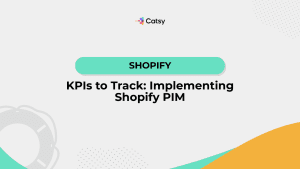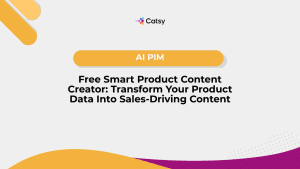What Is PunchOut Technology and How Does It Improve B2B Ecommerce?
If you are working in B2B then you know that the primary goal of B2B (business-to-business) ecommerce is to make purchasing between businesses easier.
Your systems should make sure that the whole process is faster and more accurate. There is no place for any mistakes. Businesses can now use PunchOut technology that does just that.

So, What Exactly Is PunchOut?
If you’ve ever felt frustrated switching between B2B systems to place an order, this guide will walk you through how PunchOut works. You will learn why it matters, and whether it’s the right fit for your team.
PunchOut technology allows you to access a supplier’s online store from within your own procurement platform. Think of it like a virtual tunnel, when you click a link inside your system, it “punches out” to the supplier’s website, but in a way that’s still connected to your internal workflows. The catalog you see is customized for your company.
That means contract pricing, available inventory, and even product recommendations are tailored for you. And here’s the best part: you can browse, add items to your cart, and send that cart back to your system, all without needing to re-enter anything manually.
In this Article
What Makes It Different From Regular Ecommerce?
A primary example of traditional e-commerce is online shopping at home. You visit a site, find what you need, and check out. But in a business setting, that model doesn’t always work well. You often need approval before placing an order. You might need to follow specific budgets. And contract pricing? That doesn’t always show up on a public website.
With PunchOut, everything happens within your company’s buying rules. You launch the supplier’s catalog from inside your system, shop with your negotiated pricing, and send your cart back for approval and processing. No retyping. No surprises. Just faster, cleaner ordering.
How Does PunchOut Work?
Here’s a simplified breakdown:
- You log in to your procurement system or ERP.
- You click a link to start a PunchOut session.
- A new window opens with the supplier’s online catalog, pre-loaded with your contract terms.
- You browse, filter, and add items to your cart like any e-commerce site.
- When done, you return the cart to your procurement system.
- Your internal workflows—like approvals or budget checks—kick in.
Everything is securely transferred using data formats like cXML or OCI, making sure it all syncs up accurately.
Make Catsy DAM and PIM Software an Extension of Your Team
Book a Free DemoWhy More Businesses Are Using PunchOut
There are a lot of problems that B2B businesses face. One of the reasons PunchOut technology is a great asset for business owners. It solves a lot of the headaches. Here’s why you might want to consider it:
- Fewer Steps: You don’t have to switch between systems or re-enter information.
- Always Accurate: Product info, pricing, and stock levels are current and tailored to your contracts.
- Stronger Compliance: Orders go through your established approval paths and budget rules.
- Better Spending Control: You avoid rogue purchases and stick to preferred vendors.
- Closer Supplier Relationships: Suppliers can keep your catalog updated with the latest offers and terms.
What Makes a Good PunchOut Catalog?
You should always keep in mind that not all PunchOut catalogs are created equal. If you’re evaluating suppliers, here are the key features to look for. It is important not to neglect why you should always be aware of the quality of PunchOut Catalog.
1. Clear product images and detailed specs
You should never have to try to guess what you’re buying. A good PunchOut catalog includes high-quality product images. It should not be confusing. You should be able to easily find thorough product descriptions that answer all of the questions about the products. That ensures that you can quickly understand what each item is and whether it fits your needs. This reduces confusion and helps you make confident purchasing decisions.
2. Real-time stock availability
There’s honestly nothing more frustrating than adding a product that you need to your cart, only to find out later it’s out of stock. A strong PunchOut setup shows what’s available in real time. That way you know exactly what’s ready to ship, and when.
3. Accurate contract pricing
The prices you see in the catalog should reflect your company’s agreements. Whether you have negotiated discounts, bulk pricing, or special offers, those terms should automatically show up. That way, you never overpay or waste time double-checking invoices.
4. Easy-to-use search and filter tools
If your team spends more time trying to find products than actually ordering them, it’s time for better filters. A great PunchOut catalog lets you search by keyword, category, SKU, or even supplier-specific filters. The goal is to get to the right product in just a few clicks.
5. Order history and quick reorder options
Need to restock something you ordered last month? A good system keeps track of past purchases. It also allows you to reorder those products with ease. This is particularly helpful for recurring items, standard kits, or team-wide supply lists that you always want to have at hand.
6. Strong security and encrypted data
Because PunchOut connects your internal system to a supplier’s platform, secure data handling is a must. Look for encrypted data transfers and compliance with your company’s security protocols. This keeps sensitive purchasing data protected and builds trust with your vendors.
These features not only make shopping faster but also help your team stay within guidelines and avoid mistakes.
Which Systems Work With PunchOut?
PunchOut isn’t tied to one system—it works with many popular platforms, such as:
- SAP
- Oracle
- Coupa
- Ariba
- Microsoft Dynamics
These specific integrations have the ability to help your business automate processes across different segments. They can help you with purchasing, approvals, and invoicing. You don’t need to rip out your current system to use it, PunchOut fits into what you already have.
Who’s Using PunchOut?
No matter what industry you are in, PunchOut can help you. It is especially beneficial if your business relies on frequent or large purchases. Here’s how different sectors use it:
- Manufacturing: To track parts and maintain consistent supply chains
- Healthcare: For fast, reliable, and policy-compliant equipment orders
- Retail: For bulk purchasing and managing seasonal inventory
- Government: To ensure procurement follows strict guidelines
- Education: To centralize and streamline campus-wide ordering
Challenges to Be Aware Of
While PunchOut brings a lot of benefits, it does take some work to set up. Not every supplier may offer it, and your team may need some initial training. But these challenges are easy to overcome with the right approach:
- It is for the best to start small with one or two key suppliers.
- To make sure that everything is working right, ask your IT team or a knowledgeable partner to set up the integration.
- Provide clear training and support to your purchasing team as they will be the ones that will spend the most time working with PunchOut.
- Review and update catalogs regularly.
- Ensure your security protocols are in place for data handling.
The Future of PunchOut
As digital procurement grows, PunchOut is evolving too. What’s coming next? PunchOut isn’t standing still, it’s getting smarter. More B2B companies look for ways to streamline procurement. That’s why newer features are making the entire process even more efficient.
Let’s start with the AI-powered product recommendations that this platform is offering. Searching through hundreds of listings can take a lot of time that you could’ve spent doing something more efficient. This specific system can suggest items based on what you’ve ordered in the past. It can also help you find items that trending in your industry. This saves you time and helps ensure you’re not missing out on better options or updated specs.
More and more people rely on their mobile devices. Mobile-friendly designs are therefore becoming the norm in today’s B2B commerce strategy. You should be able to check availability, whether you’re working from home, on the go, or walking the warehouse floor. There should be no need to wait until you’re back at your desk if you have a working mobile device.
Behind the scenes, PunchOut is also getting easier to connect. Thanks to simplified APIs, suppliers and buyers don’t need complex development work to get things talking. That means faster setup and fewer headaches when you’re adding new vendors.
It is good to know that cloud-based platforms are making a big difference, too. What they do is allow updates to happen in real-time. That means that you always see the most current products, pricing, and inventory. You don’t need to worry about where your team is located as it also makes access smoother and more reliable.
And for companies focused on security and traceability, blockchain enhancements are starting to play a role. They add an extra layer of trust by recording transactions in a way that can’t be changed or tampered with.
Final Thoughts
If your current B2B buying process is slow, manual, or full of errors, it might be time to upgrade your system so it works properly. PunchOut technology is there to help you simplify, standardize, and speed up procurement. It does all of that while giving your team better control over spending and compliance.
Getting used to PunchOut may seem overwhelming at first but there is no need to worry. That’s why here at Catsy, we’re ready to help make the move to PunchOut smooth and effective. It doesn’t matter if you’re just starting to explore or ready to launch your B2B commerce business. If you are ready for this next move, we’d love to chat about how we can support your team’s goals.
Want more tips, tutorials, and insights on product content and e-commerce operations?
Stay connected. We post regularly to help brands like yours scale smarter.
Are You Ready To streamline your product content management?

Frequently Asked Questions
Not necessarily. Many suppliers offer ready-to-go integrations for popular procurement platforms. That highly depends on your internal systems and how customized you want the connection to be. It’s always helpful to involve your IT team or a trusted integration partner. Starting with one supplier can make the setup process feel less overwhelming.
Not at all, as small businesses can gain a lot if they start using PunchOut. While it’s common in enterprise settings, small and mid-sized businesses use PunchOut too, especially if they order frequently or want better control over spending. You probably juggle manual orders, spreadsheets, or too many vendor logins and need help optimizing the process. It’s worth exploring if you want to run your business more efficiently.
PunchOut can work with most major procurement platforms. If you are using SAP, Oracle, Coupa, Ariba, and Microsoft Dynamics you don’t need to worry. In case you’re not sure about your system, it’s a good idea to check with your provider or your supplier’s e-procurement team.
Yes, and that’s one of the biggest benefits. When you use a PunchOut catalog, it’s customized to your agreement. That means you’ll see your negotiated pricing, available inventory, and preferred products. No guesswork or unexpected charges.
Some suppliers may not support it yet. In that case, you can either continue using traditional purchasing methods for that vendor, or you can ask if they plan to support PunchOut in the future. You might be surprised, many suppliers are already working on it.
Yes. Data is transferred using encrypted formats like cXML or OCI, which keep sensitive information safe. They constantly make it even more secure for their users. Many systems now support additional security layers like SSO (single sign-on) and two-factor authentication.
Actually, it usually speeds things up. Once it’s set up, your team won’t need to retype product info, hunt down pricing, or copy/paste order details. Everything flows directly into your procurement system, so you get fewer errors and faster approvals.
Subscribe For More Content
Sign up for monthly tips on how to drive revenue with product content.




